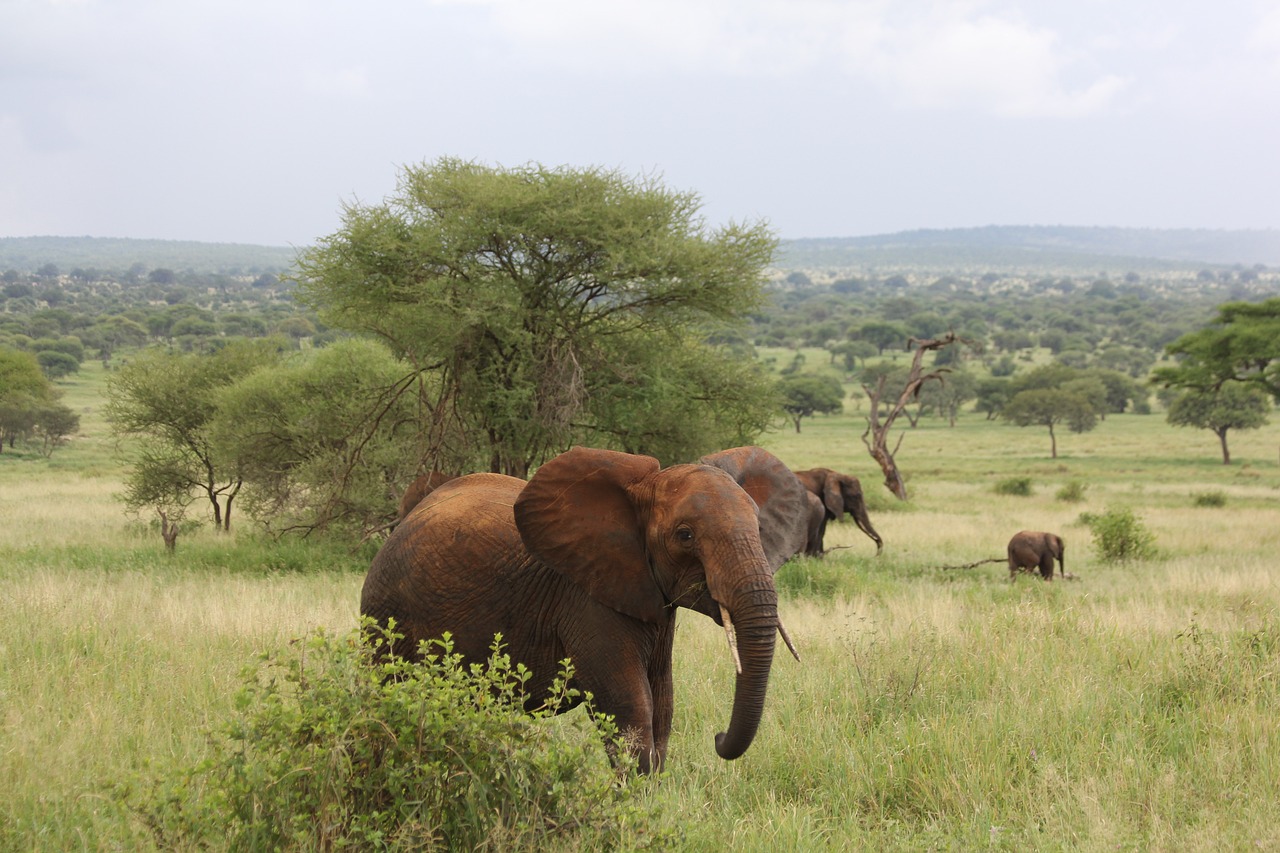Tarangire National Park
Tarangire National Park: A Wildlife Wonderland in Tanzania
Tarangire National Park, located in northern Tanzania, is one of the country’s hidden gems, renowned for its stunning landscapes and incredible wildlife diversity. Established in 1970, the park covers approximately 2,850 square kilometers and is named after the Tarangire River, which flows through the park and provides a vital water source for wildlife during the dry season. Tarangire National Park is famous for its large elephant herds, iconic baobab trees, and diverse ecosystems, making it a must-visit destination for safari enthusiasts and nature lovers.
A Sanctuary for Elephants
One of the most striking features of Tarangire National Park is its thriving population of African elephants. The park is home to one of the largest concentrations of elephants in Tanzania, with estimates suggesting over 3,000 individuals reside in the area. Visitors to Tarangire can witness these majestic creatures as they roam the savannahs and congregate around the riverbanks, especially during the dry season when water sources become scarce.
The park’s commitment to elephant conservation is evident through various initiatives aimed at protecting these magnificent animals and their habitats. Observing elephants in their natural environment is a highlight for many visitors and provides an opportunity to learn more about their social structures and behaviors.
Diverse Wildlife and Unique Ecosystems
Beyond its elephant population, Tarangire National Park is home to a rich diversity of wildlife, including lions, leopards, giraffes, zebras, and various species of antelope. The park’s varied ecosystems encompass open grasslands, swamps, and dense woodlands, supporting over 550 species of birds and a plethora of other wildlife.
- Birdwatching: Birdwatchers will be thrilled by the park’s avian diversity, as Tarangire National Park is known for its impressive bird species, including the colorful yellow-collared lovebird, the African hoopoe, and various migratory birds. With over 500 species recorded, the park offers fantastic birdwatching opportunities throughout the year.
Iconic Baobab Trees
Tarangire National Park is renowned for its iconic baobab trees, which dot the landscape and create a unique atmosphere. These ancient trees, known for their distinctive shape and massive trunks, are not only a symbol of the African savannah but also provide essential habitats for various wildlife species.
The baobabs in Tarangire are a popular subject for photographers, especially during sunrise and sunset when the soft light enhances their beauty. Exploring the park’s landscapes, with these majestic trees as a backdrop, is a highlight for many visitors.
Accessibility and Visitor Experience
Tarangire National Park is conveniently located about 120 kilometers from Arusha, making it an easily accessible destination for travelers. The park offers a range of accommodation options, from luxury lodges to budget-friendly campsites, ensuring that visitors can find suitable lodging for their needs.
Game drives, guided walking safaris, and night safaris are available, allowing visitors to explore the park’s diverse ecosystems and encounter its wildlife up close. Experienced guides provide valuable insights into the park’s flora and fauna, enhancing the overall experience.
Best Time to Visit Tarangire National Park Tanzania
The best time to visit Tarangire is during the dry season, from June to October, when wildlife congregates around the Tarangire River and waterholes. This period provides excellent opportunities for game viewing, as animals are more easily spotted in the open savannahs.
The wet season, from November to May, brings lush green landscapes and a different kind of beauty to the park. While some areas may become muddy, this season is ideal for birdwatching, as migratory birds arrive and many species engage in nesting activities.
Conservation and Sustainability
Tarangire National Park plays a vital role in Tanzania’s conservation efforts, helping to protect its diverse ecosystems and wildlife populations. The park’s management collaborates with various organizations to promote sustainable tourism practices, ensuring that the natural environment is preserved for future generations.
Entrance fees contribute to conservation initiatives and community development projects, supporting both wildlife protection and local livelihoods. Tourists are encouraged to engage in responsible tourism practices, fostering a sustainable relationship between the park and its visitors.
Conclusion
Tarangire National Park is a captivating destination that offers an unforgettable safari experience. From its large elephant herds and diverse wildlife to its iconic baobab trees and breathtaking landscapes, the park is a testament to Tanzania’s natural beauty. As a vital part of the country’s heritage, Tarangire National Park invites travelers to explore its wonders while supporting conservation efforts that protect this extraordinary environment. Whether you’re on an exhilarating game drive, birdwatching expedition, or simply soaking in the park’s beauty, a visit to Tarangire National Park promises adventure and lasting memories.




Comments are closed